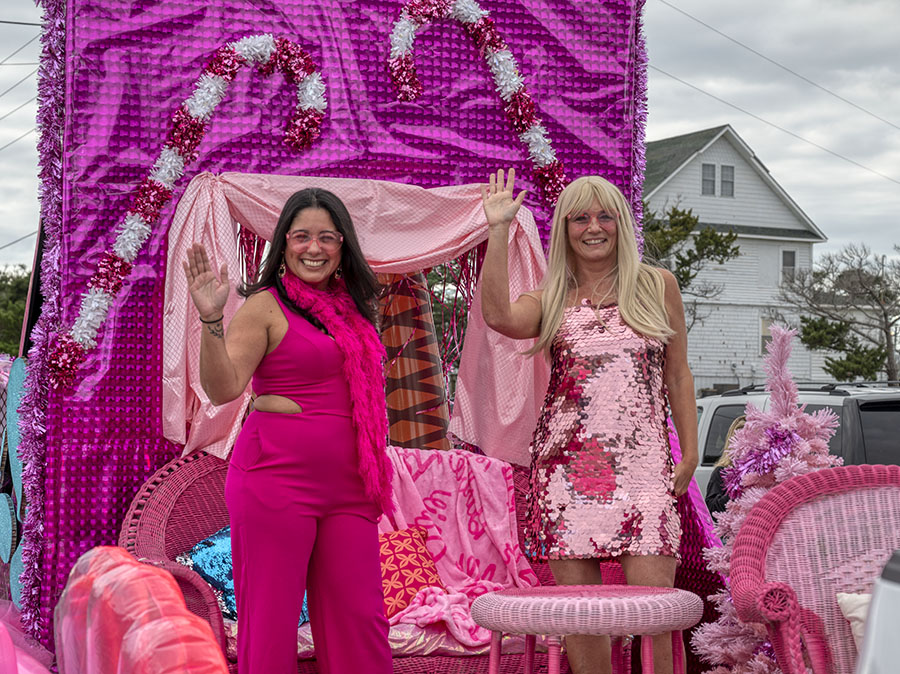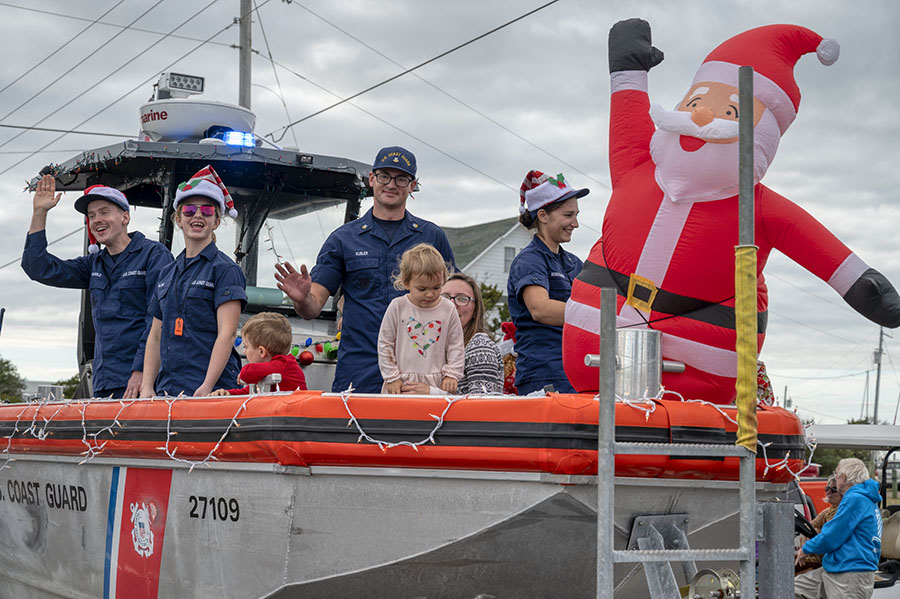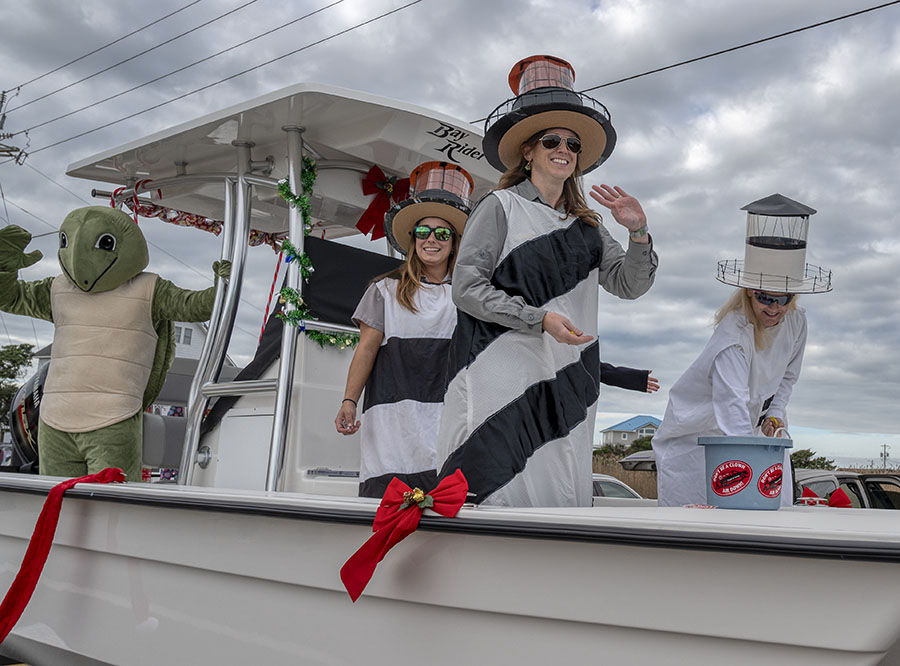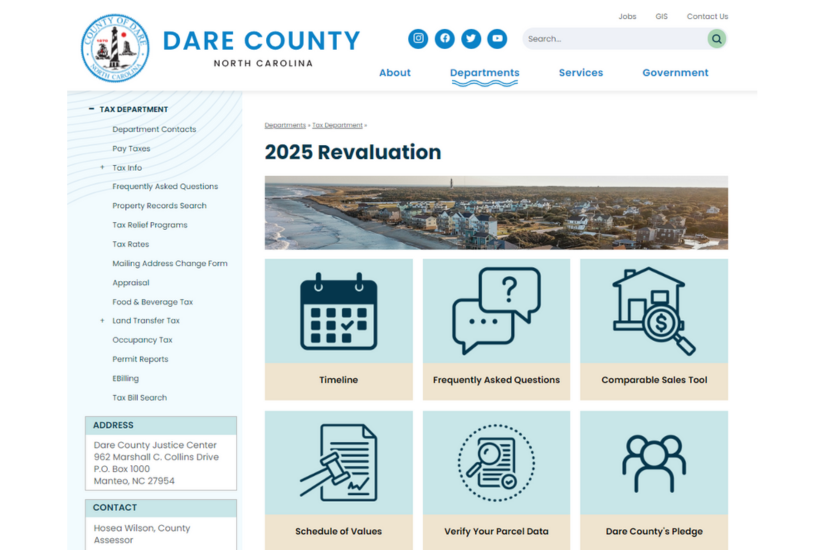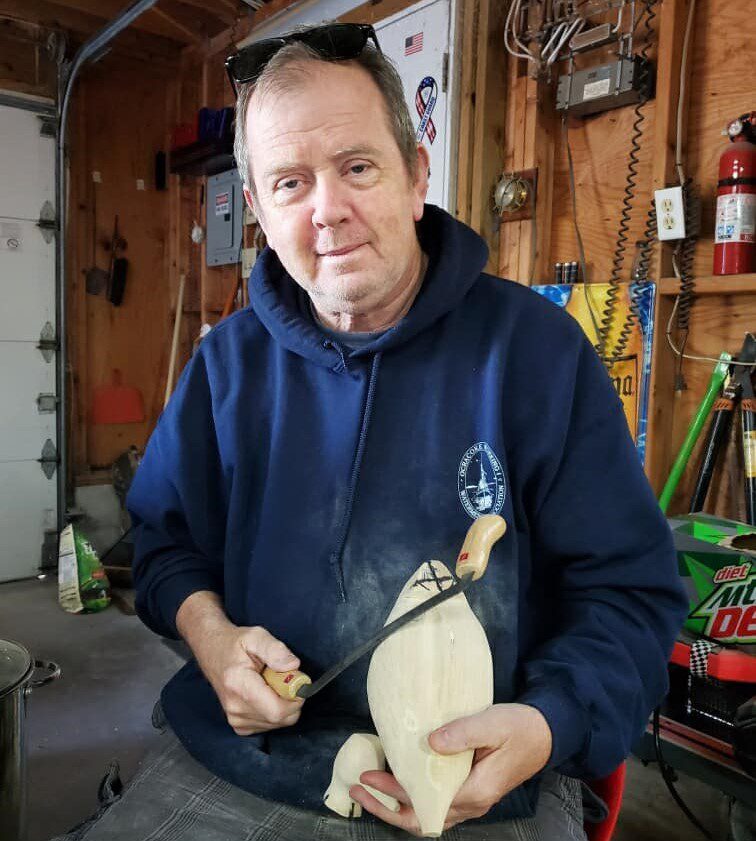Winter Brings Range of Birds to Outer Banks
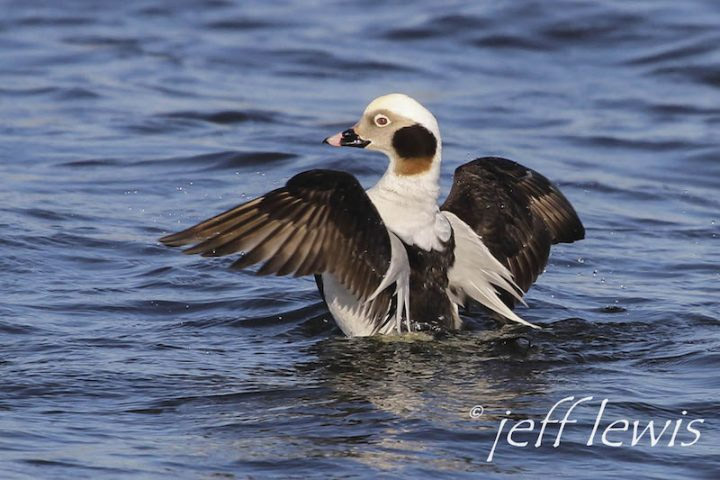
Happy New Year! I hope that everyone had a great Christmas holiday and Santa brought some warm winter clothes – or maybe a new pair of binoculars!
Here in North Carolina, far from the North Pole, we live at just the right latitude to enjoy a great host of wintering birds, including waterfowl, water-birds, raptors and songbirds. Farther north the climate can be too severe for many species, especially in mid-winter, when freeze-up occurs in many bodies of water. So the birds move south, many to the Outer Banks. With our open waters and plentiful food supplies, this area becomes a haven for many species.
So, where do we find these migrants?
Let’s start with the ocean. When conditions are right, and baitfish are close to the beaches, there can be numerous Northern Gannets, Common and Red-throated Loons, Horned Grebes and Red-breasted Mergansers visible from shore. Sometimes they are right in the surf! Look also for scoters; Blacks are most common, followed by Surfs and then White-wingeds.
During some winters, our shores attract alcids, too, so keep an eye out for Razorbills and Dovekies, “penguins of the north” they are sometimes called. Super rare birds are sometimes seen, too, like the Western Grebe that was present just off Kill Devil Hills in December. The ocean piers are great places to check – the pilings attract a variety of sea ducks. Scan through the flocks of gulls, too, occasionally you can spot a solitary Iceland, Glaucous or Black-headed Gull, mixed with the common species.
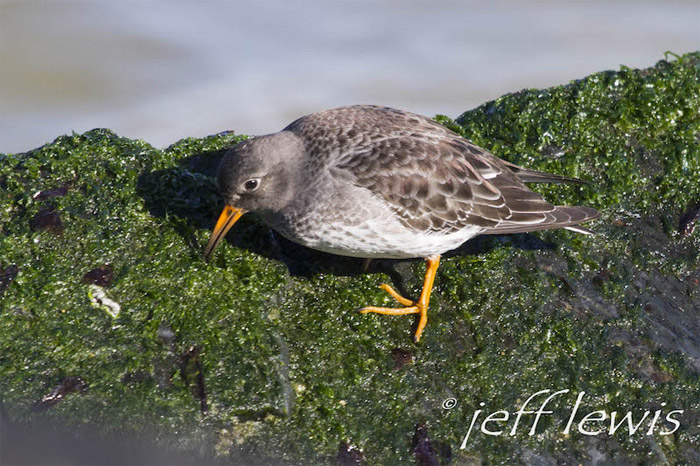
Oregon Inlet can be a great spot to bird in winter. On north Pea Island, scan the waters on either side of the bridge, and along the rock groin as well. This is a great area to see many of the previously mentioned species, as well as Common Eider, Long-tailed Duck and some years a Harlequin Duck or two (or six!). Crippling views can often be had when ducks are feeding around the base of the bridge! Bridges, now, since there are two! While at the inlet, be sure to check out the land-birds, too, this is one of the best spots in the state for rarities, like Snow Buntings and rare sparrows. Shorebirds are usually present, sometimes including Purple Sandpipers. Rare gulls are occasionally spotted in this area, as well. While on Pea Island, most birders spend a few hours birding the impoundments near the visitor center, which are full of waterfowl in January. Refer to my December article for more information.
Don’t forget to check the north side of the inlet. The Oregon Inlet Marina has attracted many a rare bird over the years. Among the buffleheads and horned grebes, look for Long-tailed Duck, Red-necked Grebe and Common Eider. Ross’s Goose and Brant have been seen here before, too. Super close looks can often be enjoyed. This is a good area to find a Black-crowned Night-Heron.
Winter is a great time to search the beaches for gulls, and the best locations are Cape Point and vicinity, and the Hatteras Inlet area. A 4WD vehicle is helpful. Bad weather days are usually best, especially after extended cold. In addition to hordes of Great Black-backed, Lesser Black-backed, Herring and Ring-billed Gulls, diligent searching may reward you with a Glaucous or Iceland Gull. Other rare possibilities include California Gull, Black-legged Kittiwake, Black-headed Gull and Little Gull. A few over-wintering Laughing Gulls are possible and dainty Bonaparte’s Gulls can be easily found over the ocean.
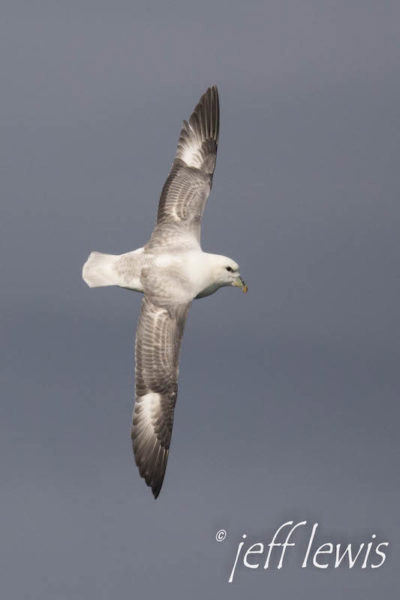
Many of the loons, grebes, diving ducks mentioned above can be seen from the ferries that run out of Hatteras Inlet and this is perhaps the most reliable way to see Brant, as the sound behind Hatteras Island hosts flocks of these geese during winter, and they are not usually visible from shore.
A fun trip is to ride the (free) ferry to Ocracoke Island and then take the long (fee) ferry from Ocracoke to Swan Quarter, on the west side of Pamlico Sound. Check the ferry schedules, as you’ll probably want the sun behind you for best visibility. You should see Northern Gannets, loons, grebes and a good assortment of diving ducks, including scoters. Watch for Long-tailed Ducks.
When you make landfall in Swan Quarter, you have options. You can ride the next ferry back to Ocracoke, or you can visit nearby Lake Mattamuskeet National Wildlife Refuge, a great winter birding destination.
The wildlife drive impoundments, near the refuge office at Mattamuskeet, are usually full of waterfowl in winter. You should be able to spot a vast assortment of ducks, geese and swans, as well as coots and grebes. Eurasian Wigeon are seen every winter. Bald Eagles are common here, seen perched high in trees or flushing the ducks. If the gates behind the refuge office are unlocked, cross the bridge and drive the road behind the lodge to the end and scan from the point. You should see a good assortment of waterfowl here, as well, including Canvasbacks, Redheads, Wigeon and Canada Geese.
Although the causeway road across Lake Mattamuskeet does not produce the numbers of waterfowl that it did historically, it is still worth birding. The culverts usually attract Buffleheads, Ruddy Ducks, Forster’s Terns and Bonaparte’s Gulls and sometimes a rare Black-headed Gull will be present. Also, the vegetation along the water’s edge holds a good variety of song birds each winter. This is easily the best spot in the area for wintering warblers. Orange-crowned and Palm Warblers are easy and there are usually several more species available for the hard-working birder. It is not unusual to find 10 warbler species during the annual Christmas bird count in late December. Blue-gray Gnatcatchers and Baltimore Orioles are usually present, as well.
For a real winter adventure, sign up for a pelagic trip to the Gulf Stream. You’ll leave Hatteras early and spend a full day on the water with a nice variety of birds, many of which are just not possible from shore. In addition to hordes of gulls, often including a rare species or two, expect to see lots of spectacular Northern Gannets, often very close to the boat. Chum lures birds close in for great views. Species that may be seen during the winter months include such desirables as Great Skua, Pomarine Jaeger, Parasitic Jaeger, Northern Fulmar, Great Shearwater and Manx Shearwater. During some winters Razorbills, Dovekies and even Atlantic Puffins can be seen. The captain and crew are experienced birders and will help you “get on” the birds. Every day is different and you never know when that bird of a lifetime will appear! In addition to birds, whales and dolphins are often seen. For more information search http://www.patteson.com/ or Seabirding.





